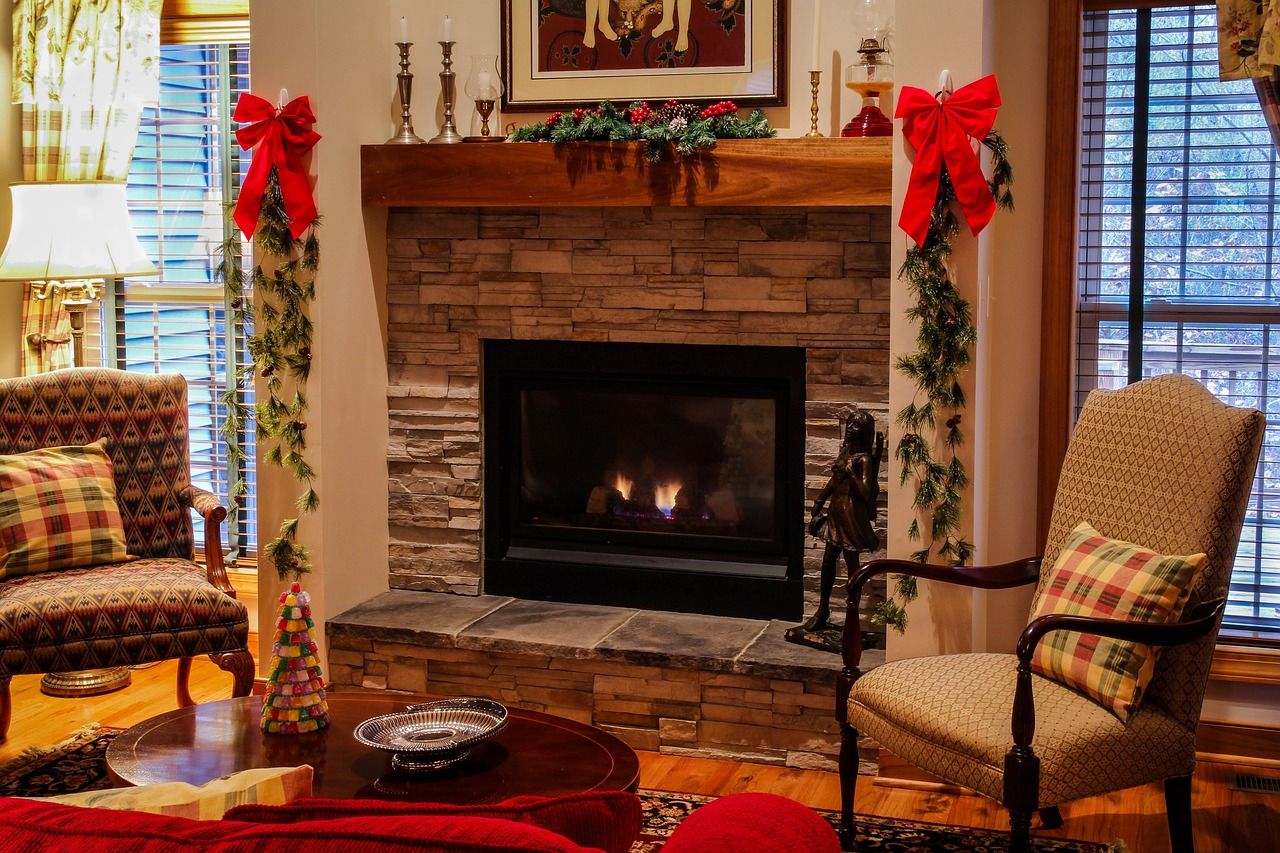A warm, cozy fireplace is not just a luxury but also a smart way to heat your home during the colder months. However, traditional fireplaces can be inefficient, difficult to maintain, and expensive to operate. This is where a gas fireplace insert comes into play. A gas fireplace insert is an efficient and stylish way to upgrade your existing fireplace, providing the warmth and ambiance of a traditional fireplace without the hassle. But, one common question homeowners ask is, “How much does a gas fireplace insert cost?"
Understanding the cost of a gas fireplace insert is crucial when considering this home upgrade. The price tag can vary greatly depending on several factors, including the type of insert, installation costs, and potential repair and maintenance expenses. This comprehensive guide aims to provide you with all the necessary information about the various costs associated with a gas fireplace insert.
Whether you're looking to improve the efficiency of your existing fireplace, add a new heating element to your home, or simply seeking to understand the costs for future planning, this guide will help you navigate the financial aspects of installing a gas fireplace insert. Let's dive in and explore this topic in detail.
How Much Does a Gas Fireplace Insert Cost?
When considering the installation of a gas fireplace insert, it's important to understand the cost involved. The Gas Fireplace Insert Cost can vary significantly based on a multitude of factors such as the type of insert you choose, the brand, size, features, and even where you live.
On average, homeowners can expect to pay anywhere from $2,000 to $5,000 for a new gas fireplace insert. This price often includes the cost of the unit itself, which typically ranges from $1,000 to $3,000, and the cost of professional installation, which can range from $600 to $2,500, depending on the complexity of the installation.
The cost can also vary based on the type of gas fireplace insert you choose. For instance, vented gas fireplace inserts, which require a chimney or an external vent, tend to be on the higher end of the price spectrum, while ventless or vent-free inserts, which don't require a vent or chimney, tend to be more affordable.
Gas fireplace inserts with additional features, such as remote control, thermostat controls, and high-efficiency models, may also cost more than basic models. Furthermore, the size of the insert can also impact the cost. Larger inserts that provide more heat will typically cost more than smaller, less powerful models.
It's also essential to consider the cost of running a gas fireplace insert. While gas fireplace inserts are typically more efficient than traditional wood-burning fireplaces, there will still be an ongoing cost for the gas used. This cost will depend on current gas prices and how often you use the fireplace.
In summary, while the initial Gas Fireplace Insert Cost can be substantial, many homeowners find that the increased efficiency, convenience, and aesthetic appeal of a gas fireplace insert make it a worthwhile investment. Remember, it's always best to get several quotes from different manufacturers and installers to ensure you're getting the best deal possible.

Gas Fireplace vs. Gas Fireplace Insert
Understanding the differences and similarities between a gas fireplace and a gas fireplace insert is essential when making a decision about your home's heating needs.
A gas fireplace is a built-in fixture that is installed during the construction of a home or during significant renovations. It requires a dedicated gas line and a venting system, typically a chimney or a direct vent.
Gas fireplaces can be designed to mimic the look of traditional wood-burning fireplaces, and they offer the convenience of instant heat at the flip of a switch. However, installing a new gas fireplace can be a significant investment, both in terms of cost and time.
On the other hand, a gas fireplace insert is designed to fit into an existing fireplace. It is a cost-effective and efficient way to upgrade a traditional wood-burning fireplace. The gas fireplace insert uses the existing chimney for venting, and it also requires a gas line.
While the installation is generally simpler and less expensive than a full gas fireplace, there may still be costs associated with modifying the existing fireplace or chimney to accommodate the insert.
Both options offer the convenience of gas, the charm of a real flame, and improved heating efficiency compared to traditional wood-burning fireplaces. The choice between a gas fireplace and a gas fireplace insert often comes down to your home's current setup, your budget, and your personal preferences.
Gas Fireplace Insert Repair Cost
Just like any other home appliance, a gas fireplace insert may require occasional repairs to maintain its efficiency and safety. Understanding the potential repair costs is an essential part of overall Fireplace Insert Pricing.
Repair costs can vary depending on the nature and complexity of the problem. On average, you may expect to pay anywhere from $100 to $300 for minor repairs, such as replacing a thermocouple or a pilot light.
For more complicated issues, like replacing a gas valve or fixing a blower motor, the repair cost can range between $200 and $800.
Additionally, regular maintenance and servicing can help in preventing major repairs and extending the life of your gas fireplace insert. This typically includes annual inspection and cleaning, which costs around $100 to $200.
It's also important to remember that labor costs can vary depending on your location and the technician's experience. Always ensure to hire a certified professional to handle gas fireplace insert repairs for safety reasons.
All these factors should be taken into account when considering Fireplace Insert Pricing. The initial investment in a gas fireplace insert may be significant, but with proper care and maintenance, it can be a cost-effective and efficient source of heat for your home.
Cost to Install Other Gas Fireplace Types
When considering the addition of a gas fireplace to your home, it's crucial to understand the Gas Insert Installation Expenses associated with different types.
Firstly, there are built-in gas fireplaces. These models are designed to be installed into a wall or framed into a mantel during construction or significant renovations. The installation costs for these models can range from $2,000 to $5,000, depending on the complexity of the installation and the specific model chosen.
Next are gas fireplace stoves, which are freestanding units that mimic the look of traditional wood-burning stoves. They can be vented through an existing chimney or through a wall for direct venting. Installation costs for these units can range from $1,500 to $3,500.
Finally, gas log sets, which are installed directly into an existing fireplace, are another option. These are the least expensive to install, with costs typically ranging from $300 to $1,200. However, they are also less efficient than other types of gas fireplaces.
Remember, these are just the installation costs. The cost of the unit itself, ongoing gas expenses, and potential repair costs should also be considered when estimating the total Gas Insert Installation Expenses.

Factors Affecting Gas Fireplace Insert Cost
When considering the Cost of Gas Fireplace Upgrade, especially with a focus on gas fireplace inserts, several factors can influence the final cost.
The first factor is the type and size of the insert. Gas fireplace inserts come in various styles, from traditional to contemporary, and different sizes to fit specific fireplaces. The more elaborate and larger the insert, the higher the cost will generally be.
The second factor is the features of the insert. Modern gas fireplace inserts can come with a range of features, including remote controls, flame adjustment controls, and even thermostatic controls. The more features an insert has, the higher the cost.
Thirdly, the installation costs can significantly impact the overall cost. This includes the labor costs to install the insert, any necessary modifications to your existing fireplace or chimney, and the cost to run a gas line if one is not already in place.
Lastly, the brand of the insert can influence the cost. High-end brands tend to be more expensive, but they often offer better warranties and are typically made of higher-quality materials.
In conclusion, the Cost of Gas Fireplace Upgrade can vary greatly depending on these factors. It's essential to consider all these aspects and not just the upfront cost when choosing a gas fireplace insert.
Benefits of Installing a Gas Fireplace Insert
When Budgeting for Gas Fireplace Insert, homeowners should consider not only the initial installation costs but also the long-term benefits that such an upgrade can bring.
One of the most significant benefits of a gas fireplace insert is its energy efficiency. Compared to traditional wood-burning fireplaces, gas inserts can convert much more of their fuel into usable heat. This can lead to significant savings on heating bills over time.
Another advantage is ease of use. With a gas fireplace insert, there's no need for chopping or storing wood, and starting a fire is as simple as flipping a switch or pressing a button. This convenience can be a major selling point for many homeowners.
Gas fireplace inserts are also cleaner than their wood-burning counterparts. They produce fewer emissions, making them a more environmentally friendly choice. Additionally, they don't create ash or soot, which can be a significant benefit for those who want to avoid the mess associated with a traditional fireplace.
Lastly, a gas fireplace insert can add aesthetic appeal to a home, potentially increasing its value.
In conclusion, when Budgeting for Gas Fireplace Insert, the upfront costs should be weighed against these considerable benefits. It's an investment that can bring both financial and lifestyle returns.
DIY Gas Fireplace Insert Installation vs. Hiring a Professional
When considering Installation Costs for Gas Inserts, homeowners often debate between taking the DIY route or hiring a professional. Both options have their pros and cons.
DIY installation can save on labor costs, which can be a significant portion of the overall expenses. It can also be a rewarding project for those who enjoy hands-on work.
However, DIY installation requires a good understanding of gas lines, venting systems, and fireplace structures. Any mistakes could lead to gas leaks, improper venting, or even fires, making it a risky option.
Hiring a professional to handle the installation ensures the job is done correctly and safely. Professionals have the necessary knowledge and experience to handle any unforeseen issues that may arise during installation. They can also typically complete the job much quicker than a DIYer. The downside, of course, is the added cost. However, many homeowners find the peace of mind worth the extra expense.
In conclusion, while DIY installation can save money upfront, it comes with significant risks. Hiring a professional increases Installation Costs for Gas Inserts, but ensures safety and quality. Therefore, it's generally advisable to leave gas insert installation to the professionals.

Tips to Save Money on a Gas Fireplace Insert
When Comparing Gas Fireplace Expenses, there are several tips to consider that can help save money on a gas fireplace insert.
First, consider the size and style of the insert. While larger and more elaborate inserts may look impressive, they also tend to cost more. Opting for a smaller, simpler insert can help keep costs down.
Second, consider the features you actually need. While many modern gas fireplace inserts come with a variety of features, not all of them may be necessary for your needs. By opting for an insert with fewer features, you can save money on the upfront cost.
Third, shop around for the best price. Prices can vary significantly between different retailers, so taking the time to compare prices can help you find the best deal.
Fourth, consider the installation costs. While it's generally recommended to hire a professional for installation, costs can vary. Get quotes from several installers to ensure you're getting a fair price.
Lastly, consider the long-term savings. While a gas fireplace insert may have a higher upfront cost compared to a traditional fireplace, they are typically more energy-efficient, which can lead to savings on heating bills over time.
In conclusion, when Comparing Gas Fireplace Expenses, there are ways to save both on the initial purchase and in the long run.
FAQs
1. How does a gas fireplace insert impact home value? A gas fireplace insert can significantly increase your home's value. It not only adds aesthetic appeal but also improves energy efficiency, both of which are attractive to potential buyers.
2. Is a gas fireplace insert a good investment? Yes, it is generally considered a good investment. While the Fireplace Insert Price Range can vary, the long-term benefits such as increased home value, energy efficiency, and reduced maintenance costs make it a worthwhile investment.
3. Can I add a gas fireplace insert to an existing house? Yes, a gas fireplace insert can be added to an existing house. They are designed to fit into the existing firebox of a traditional fireplace. However, the installation should ideally be done by a professional to ensure safety and proper functioning.
4. How can I save money on a gas fireplace insert? You can save money by comparing gas fireplace expenses, choosing a model with only necessary features, and shopping around for the best price. Also, consider the long-term savings from increased energy efficiency.
5. When should I replace my gas fireplace insert? A well-maintained gas fireplace insert can last for many years. However, if you start noticing issues like difficulty lighting the fire, poor heat output, or excessive soot, it might be time to consider a replacement.
6. Do I need a chimney for a gas fireplace insert? Yes, a gas fireplace insert needs a chimney or vent for safe operation. The vent removes combustion gases from your home, ensuring a clean and safe environment.
7. Can a gas fireplace insert operate during a power outage? Yes, most gas fireplace inserts can operate during a power outage. While some features like blowers or fans might not work, the fireplace itself can still provide heat, making it a reliable source of warmth during power outages.
Remember, while gas fireplace inserts come with many benefits, the Fireplace Insert Price Range varies, and it's crucial to choose one that fits your budget and needs.
In conclusion, a gas fireplace insert can be a valuable addition to your home, enhancing its aesthetic appeal and improving energy efficiency. It's an investment that can increase your home's value and potentially reduce heating costs. However, the Fireplace Insert Price Range varies, and careful consideration is needed when choosing the right model for your needs.

Whether you're considering adding a fireplace to an existing home or replacing an old insert, it's crucial to weigh the pros and cons, consider installation costs, and make an informed decision. Remember, safety is paramount, and it's generally advisable to have the installation done by a professional.
Ready to make the right financial decision for your home improvements? SimpleDirect is here to help. Our easy-to-use financial tools can guide you through your gas fireplace insert investment. Whether you need to compare prices, calculate potential savings, or explore financing options, SimpleDirect has got you covered. Don't let financial uncertainty stall your home improvement plans. Start exploring SimpleDirect's financial tools today and make your dream of a cozy, efficient home a reality.






